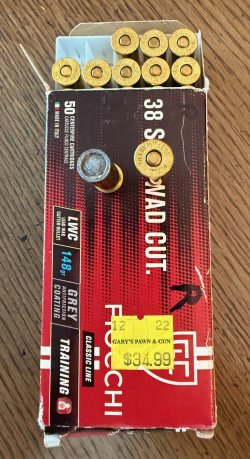USSR
Member
It threw me off when you said "wrinkling", but then when you said "The wrinkles were halfway and below the bullet", and I realized what is going on. Your cases are buckling because your cases are not designed to have a bullet seated that deeply in the case. .38 Special case have an optimal thickness at the top for seating a bullet, but as the brass goes further towards the base, the brass thickens to handle the pressure, and the subsequent reduced internal dimensions is what is causing your buckling. Years ago, Winchester, Remington and Federal made and sold a ton of wadcutter ammo. They made special brass cases for this ammo that had a uniform case thickness way down into the case. Winchester and Remington wadcutter cases are identified by having 2 cannelures, one at about halfway down the case, and the second on just above it. Federal wadcutter cases are a bit harder to identify, as they only have a single cannelure located about 3/8" below the top of the case instead of the 1/8" below the top of the case used on their regular ammo. I stocked up with once-fired wadcutter cases years ago. PMC cases are one of the worst for loading wadcutters, so I would suggest you look around for some American made cases. Hope this has been of some help.
Don
Don






